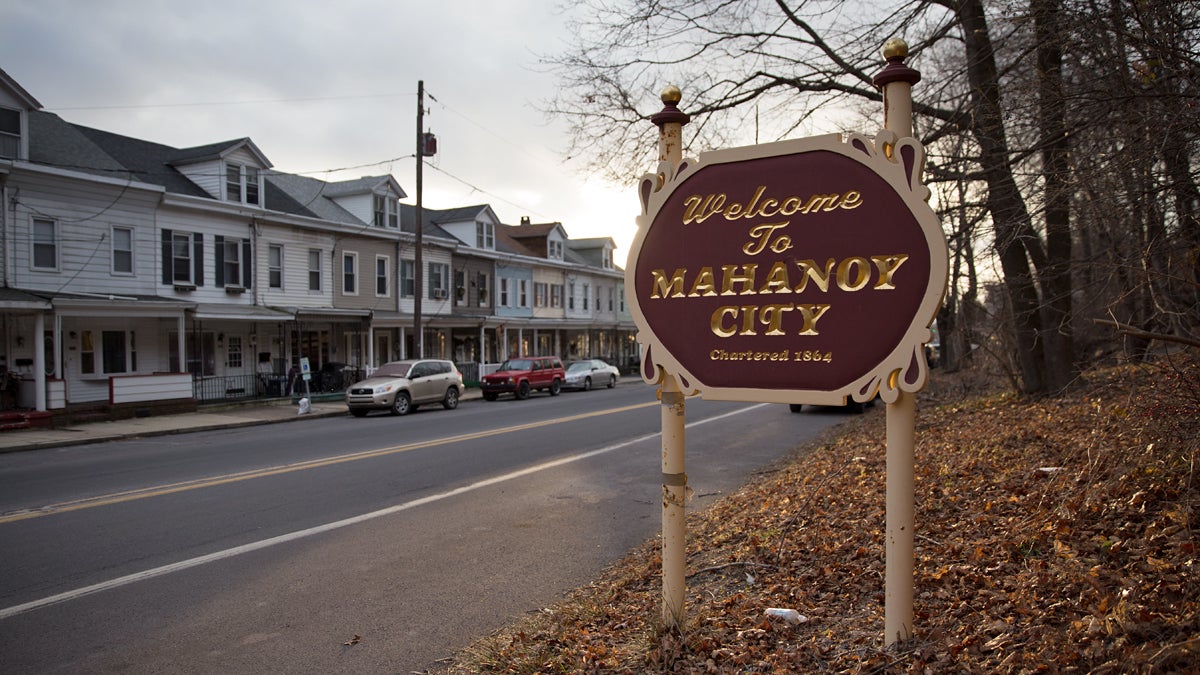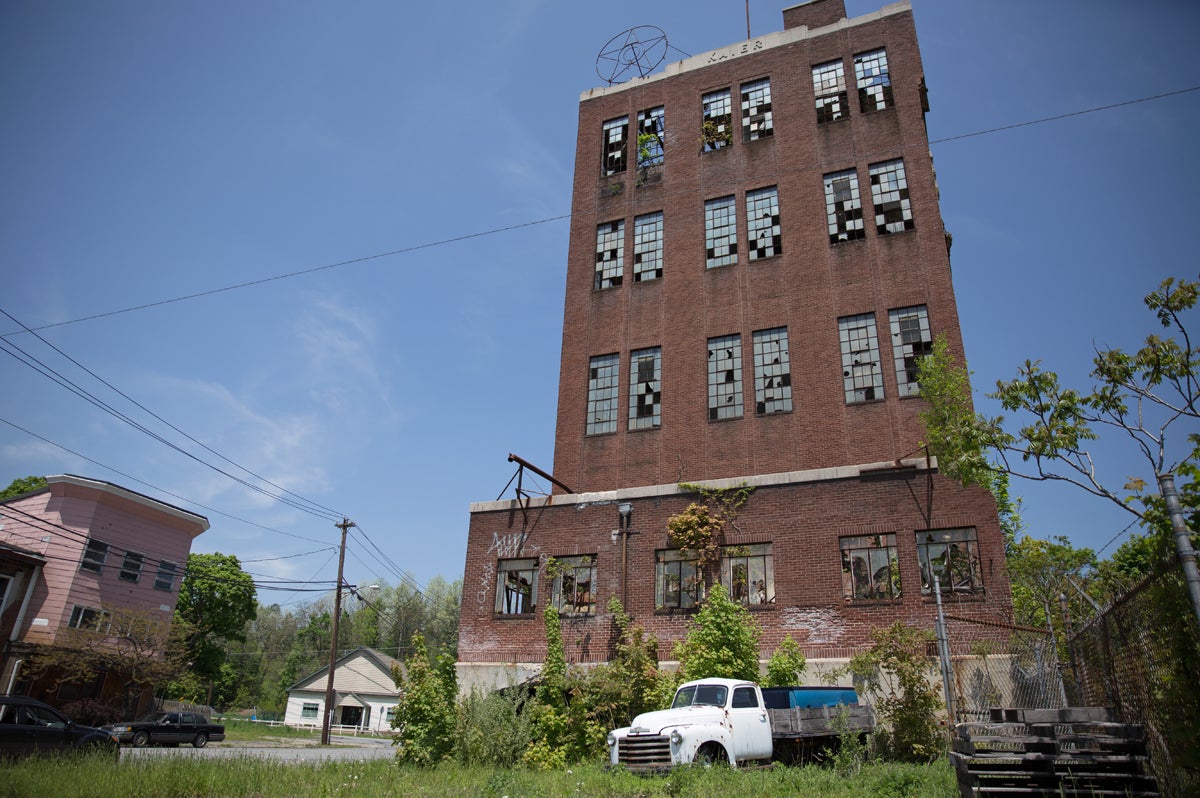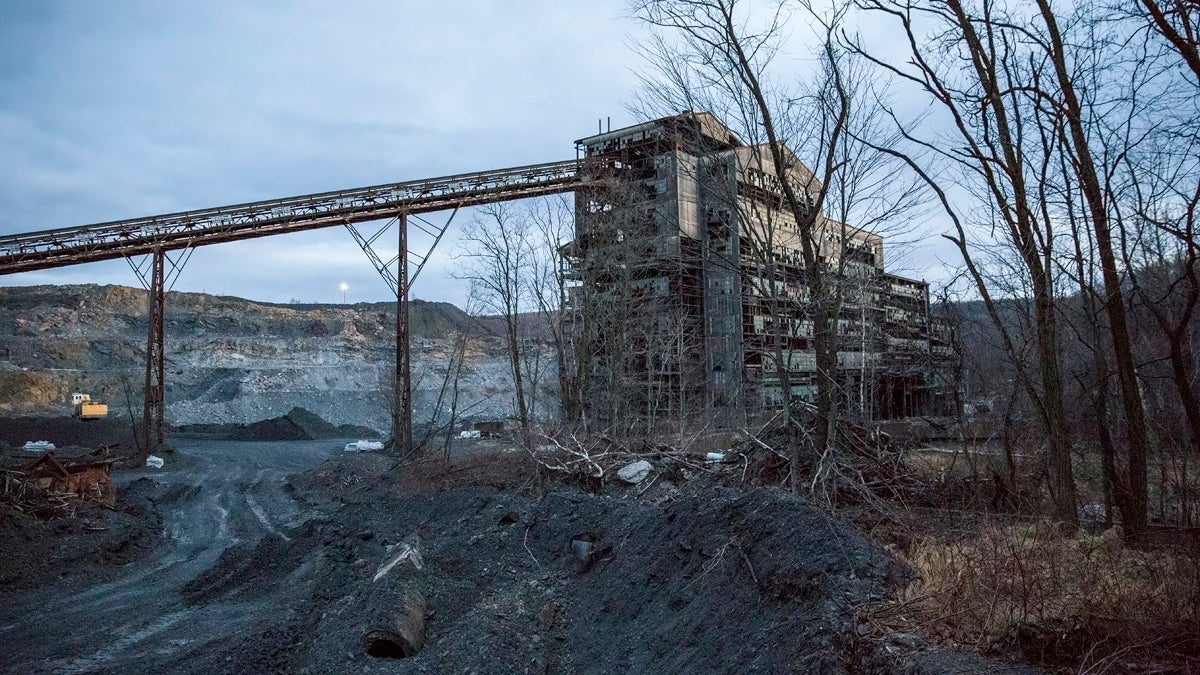Fixing Mahanoy City: Why this Pa. coal town won’t survive without shifting its tax base
Listen
Mahanoy City
State consultants have released their plan to stabilize Mahanoy City’s local government.
Thirty distressed municipalities have turned to the state for help finding their financial footing through a program known as Act 47.
The latest is Mahanoy City, a 4,000-person borough in Pennsylvania’s Coal Region.
After years of borrowing money and scaling back services, officials finally sought help when they risked defaulting on loans taken just to prevent a local government shutdown.
Consultants have been working on a financial recovery plan since the beginning of this year.
The draft version is 128 pages long, but is driven by something easily seen with a quick tour through Mahanoy City:
Half a block of burnt out row homes on Center Street.
The former high school looming over a steep outdoor staircase, now fronted by sawhorses, where students once made the daily climb up hundreds of steps.
There’s an abandoned warehouse where cars tend to linger a bit too long, a brewery crumbling into Main Street, and just outside town, a partially dismantled coal breaker that was the state’s last operating.
Blight, according to borough manager Dan Lynch, is the community’s biggest problem, detracting from the aesthetic and creating public health and safety risks.
“Private property owners, when they fail and there’s no one left to act, then it becomes the borough’s duty to act,” Lynch says. “It’s so expensive. I mean, it’s tremendously expensive. It costs double what you could buy a house for in this town to tear one down.”

Coal region trajectory
The going rate for a house is less than $10,000; a recent row home demolition cost $24,000, Lynch says.
Mahanoy City wasn’t always like this, Lynch says.
“At one point in the history of this town, there were [over a hundred] bars. There was one for every 98 people. So, they called it, you know, like ‘The Drinking Capital of the World,'” Lynch says. “Way back then, you know people working in the mines, a lot of them didn’t have a home. And they might’ve rented a bed. And they’d spend a shift in the bed, a shift in the bar, a shift in the mine.”
The population peaked in the 1920s at 15,000 people.
Now, it’s 4,000.
“My brother-in-law used to come up (he lives in Philadelphia) and he’d sleep til 1:30 in the afternoon, and he’d be, like, it’s like a sensory deprivation chamber,” Lynch says.
Lynch seems to like that Mahanoy City’s quiet.
But it’s also sort of a symptom of the coal region trajectory.
Orphaned by the industry, a town loses residents and its tax base, with no change in the size of the area that needs policing, fire protection and infrastructure maintenance.
The local government’s still responsible for that, plus cleaning up after private parties who’ve cut their losses.
Mahanoy City’s vacancy rate is 26 percent, the highest of all Act 47 towns.
“We’ve come to find that you’re not legally obligated to take a home if your relative were to pass or …if it were to fall to you,” Lynch says. “So, we’ve had people who literally say, ‘I want nothing to do with it.'”

The suggested fix
Consultant Gerry Cross says the negative impact of abandoned and/or dilapidated properties on real estate values is particularly critical because state law makes them the main source of operating revenue for local governments.
“The rules that we’re operating under … don’t recognize the shift in the taxable base,” says Cross, who heads the Pennsylvania Economy League’s midstate office. “I think you’re seeing the tail end of … I don’t want to say the life cycle of the municipality, but the tail end of a lot of these municipalities to be able to operate under … the structures available to them.”
Cross says the plan needs Borough Council approval, but is expected to stand pretty much as is.
As in most towns, public safety is the biggest cost. But Cross says he won’t recommend dissolving the police department. That would shift the public safety burden to the State Police, at no cost to the borough, but Cross says he’s one of the critics who say the practice isn’t fair or sustainable.
And while the borough might not have a lot of residents, he says, it’s not a rural area and it’s far too densely populated for state police coverage to suffice. Not to mention, residents “wouldn’t stand for it,” he says.
Cross says Mahanoy City should consider home rule, which would afford more taxing flexibility.
Plenty of Act 47 towns get the same advice, for similar reasons, and some take it. But there’s an important distinction here.
By the time most municipalities get into Act 47, their property tax rate is already as high as it can be, under state law.
But not in Mahanoy City, in part because the collection rate is around 70 percent.
“That’s one of the worst we’ve seen,” Cross says. “They eventually get their money, … but that’s a disaster for the municipality, [in the meantime, because] they don’t have cash to operate.”
Cross says having tax sales more often might help, which would require the cooperation of the Schuylkill County government.
But even if officials could reasonably expect to collect in full, real estate values are too low to generate much money.
Which brings us to his next recommendation: Increase income taxes. Cross says he’s recommending the shift not only because real estate taxes won’t generate much more money right now, but also because the borough has “a healthy base of population in the working years, [ages] 18 to 64.”
Population loss
Keystone Crossroads’ analysis of Census data shows that, basically, people are dying off faster than they’re moving away in most Act 47 towns.
Since 1990, Mahanoy City’s population loss has been most dramatic among residents over the age of 65, and the median age has dropped.
But working-age doesn’t necessarily mean working or earning a living wage.
Median household and per capita incomes have grown in Mahanoy City, but only by 3 percent. That’s less than a tenth of the rate in the surrounding county and statewide.
Emily Seiger sees that borne out daily at Mahanoy Area School District, where she’s a secretary and every week when she helps feed the borough’s hungry residents through a ministry known as God’s Chuckwagon, often hoping food doesn’t run out.
“I was naive to how many people were really in need. And when I decided to do outreach, like, I would see a little more and a little more and through school I would see a little more,” Seiger says.
Lynch says a nearby concrete panel manufacturer offers decent wages. But it opened 15 years ago, and not many major employers have landed since. Lynch says the last potential project to spark some hope was a cargo airport in Luzerne County, but that’s “now dead” after a decade-long legal battle.
“Something … where it’s going to be 1,000 jobs or 1,500 jobs, would be huge for this area,” Lynch says.
Act 47 tries to stabilize local governments in financial crisis through low-interest loans and engaging consultants like Cross.
That’s just to prevent municipal governments from folding, though, to enable them to continue doing the basics.
Lasting economic recovery or thriving, as Lynch knows, hinges on changes beyond its borders.
And, certainly, beyond any Act 47 plan.
WHYY is your source for fact-based, in-depth journalism and information. As a nonprofit organization, we rely on financial support from readers like you. Please give today.



